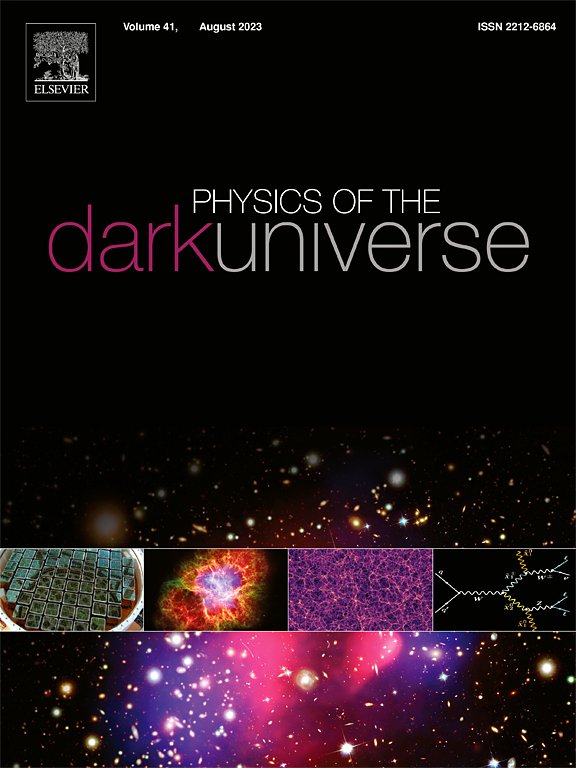On the field theoretical description of an alternative model to Generalized Chaplygin Gas and its thermodynamic behaviour
IF 5
2区 物理与天体物理
Q1 ASTRONOMY & ASTROPHYSICS
引用次数: 0
Abstract
This paper investigates a newly proposed fluid description of dark energy within the framework of the late-time accelerated expansion of the universe. Our primary objective is to explore the theoretical foundation of the proposed equation of state by establishing its correspondence with well-known scalar field models, such as quintessence, k-essence, and DBI-essence. Through this correspondence, we reconstruct key field parameters, including the scalar field and scalar potential , and analyse their evolutionary behaviour across cosmic time. The study also evaluates the model’s physical consistency and cosmological implications by examining fundamental energy conditions—Null Energy Condition (NEC), Dominant Energy Condition (DEC), and Strong Energy Condition (SEC). Furthermore, we conduct a comprehensive stability analysis to ensure the robustness of the model and investigate its thermodynamic properties, including possible phase transitions using entropy and Gibbs free energy. To assess the observational viability of the model, we compare its predictions against recent datasets, including Cosmic Chronometers (CC), Baryon Acoustic Oscillation (BAO), and Supernova Type-Ia from the Pantheon+SH0ES compilation and Union 2.1, as well as recent DESI and DESY5 data. Our analysis demonstrates that the proposed fluid model aligns well with observational constraints, reproduces the late-time acceleration of the universe, and offers a compelling alternative to the standard CDM model while maintaining consistency with current data.
求助全文
约1分钟内获得全文
求助全文
来源期刊

Physics of the Dark Universe
ASTRONOMY & ASTROPHYSICS-
CiteScore
9.60
自引率
7.30%
发文量
118
审稿时长
61 days
期刊介绍:
Physics of the Dark Universe is an innovative online-only journal that offers rapid publication of peer-reviewed, original research articles considered of high scientific impact.
The journal is focused on the understanding of Dark Matter, Dark Energy, Early Universe, gravitational waves and neutrinos, covering all theoretical, experimental and phenomenological aspects.
 求助内容:
求助内容: 应助结果提醒方式:
应助结果提醒方式:


